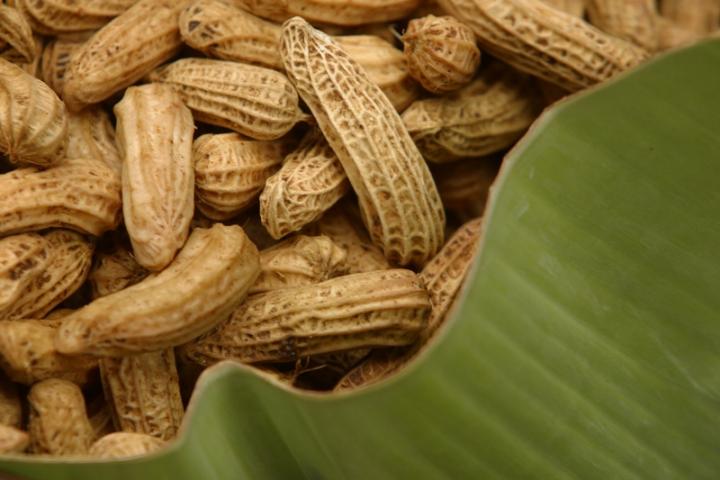
Try growing peanuts in your garden! Often thought of as just a snack to be munched on at ball games or passed around at cocktail parties, peanuts are actually a healthful and nutritious food.
Whether eaten raw or roasted or spread on bread, peanuts are an excellent source of fiber, vitamins, and minerals; have no cholesterol; and contain more protein than many meats.
The Peanut Plant
People often are surprised to find out that peanuts are not nuts but instead are actually seeds from a leguminous plant related to peas and beans. (See our plant guides for more about growing peas and beans.)
The plant is unique because its flowers grow aboveground yet the pods containing the seeds develop in the soil.
The yellow, pealike blossoms are self-pollinating. Once fertilized, the delicate petals fall away. The stalks (called pegs) just under the ovaries then elongate and bend toward the earth, growing into the soil. When underground, the ovary at the tip of each stalk enlarges to form a peanut pod.
Growing Peanuts
Although considered a southern warm-weather crop, peanuts have been grown as far north as southern Canada.
- Peanuts have a long growing season (ranging from 100 to 130 frost-free days); they’re planted a few weeks after the average last frost date in the spring and often dug up anytime after the first of September.
- The trick to raising them in the North is to choose an early-maturing variety such as “Early Spanish” (100 days) and plant on a south-facing slope, if possible. You could also get a head start to the season by sowing peanuts indoors 5 to 8 weeks before transplanting outside.
- It’s important to select a site that receives full Sun.
- Plastic row covers are recommended to protect the young plants from spring frosts.
- To grow peanuts, you will actually start with the the shells of fresh, unroasted peanuts.
- To start inside, fill a large, four-inch-deep plastic bowl ⅔ full of moist potting soil. Shell four peanuts and place them on top of the soil; then cover with one inch of soil. Plants will sprout quickly. Transplant seedlings outside.
- To plant outside, place the peanut seeds two inches deep and eight inches apart in loose, well-drained soil. (Add sand and aged compost to soil to loosen.)
- When the plants are six inches high, cultivate around them to loosen the soil so that the pegs will penetrate it easily.
- Then, hill them as you would potatoes and mulch with two inches of straw or grass clippings.
- Small, yellow, pea-like flowers will develop along the lower part of the stem. After the flowers fade, the ovaries will swell, start to grow toward the ground, and then push into the soil.
- Peanuts are harvested before frost when the plant yellows.
- Dig out the entire plant with a spading fork, carefully shake off most of the soil, and then hang to dry indoors for about a month.
- The “nut” can be enjoyed raw or roasted to perfection by baking shelled or unshelled in a 350° F oven for 20 minutes.
Did You Know: It takes about 540 peanuts to make a 12-ounce jar of peanut butter.
Peanuts are thought to have originated in South America, where Peruvian Indians cultivated them at least 3,500 years ago. Besides valuing peanuts as food, the Peruvians considered them a status symbol and even used them as money—which isn’t surprising when you consider how many of us still think that we are working for peanuts.
Ever wondered where popcorn comes from? It’s also a seed plant! See our growing tips for popcorn.






